

Designing to boost productivity
Customer service and other teams in companies usually have an intense workload and complex management, which if not well resolved can worsen the customer experience.
Context
- Customer service channels served by people generate diverse and difficult tasks to coordinate without specific tools.
- Uncoordinated initiatives in a company generate inefficiencies in customer service.
- Products for internal management in companies receive less attention in their usability.
- Tools that do not facilitate work generate rejection and distrust in the teams.
- How does customer service impact the perceived quality of the service?
- Where and how do customer service teams need empowerment?
- What are the main barriers that hinder team productivity?
- How can the adoption of internal management tools be accelerated?
Understanding the challenge
When analyzing customer service in companies, I found that although many offer service through various channels, the most important limitation for a sustainable omnichannel experience is the human factor. Knowing that interactions with people are the ones that add the most value to the experience, I identified three key actors with whom to address the dilemma:
Headquarters
Centralized teams that establish strategic guidelines, but are far from contact with customers. They depend on the information flowing to make decisions.
Local management
They lead the customer service teams. They set local guidelines and are intermediaries in communication and decision-making.
Customer service
People who interact directly with customers, either in person, by phone or other means. They are the first line of service and those who receive the greatest pressure.
I led and participated in an investigation that covered all of Spain, combining the review of previous investigations, remote interviews, and trips to customer service points where I can observe the day to day and carry out interviews and workshops with the teams.
The main learnings and findings of this research were the following:
- The way of working is marked by the indications of headquarters and the local management.
- Workplace digital products very often do not facilitate the tasks marked by the way of working.
- When internal products or processes interfere with customer service, work teams project their frustration on their relationship with customers and supervisors.
- Changes in internal products can be perceived as control or micromanagement strategies by the teams.
Design process
Relationship with customers
In the research we explored the way in which the different teams relate to customers, in addition to analyzing how much those practices aligned with the company's positioning strategy. We study each gap to understand why it happens and opportunities for correction.
This work allowed us to enrich the customer journey with an additional analysis of key moments of interaction with people, on which to propose specific actions.

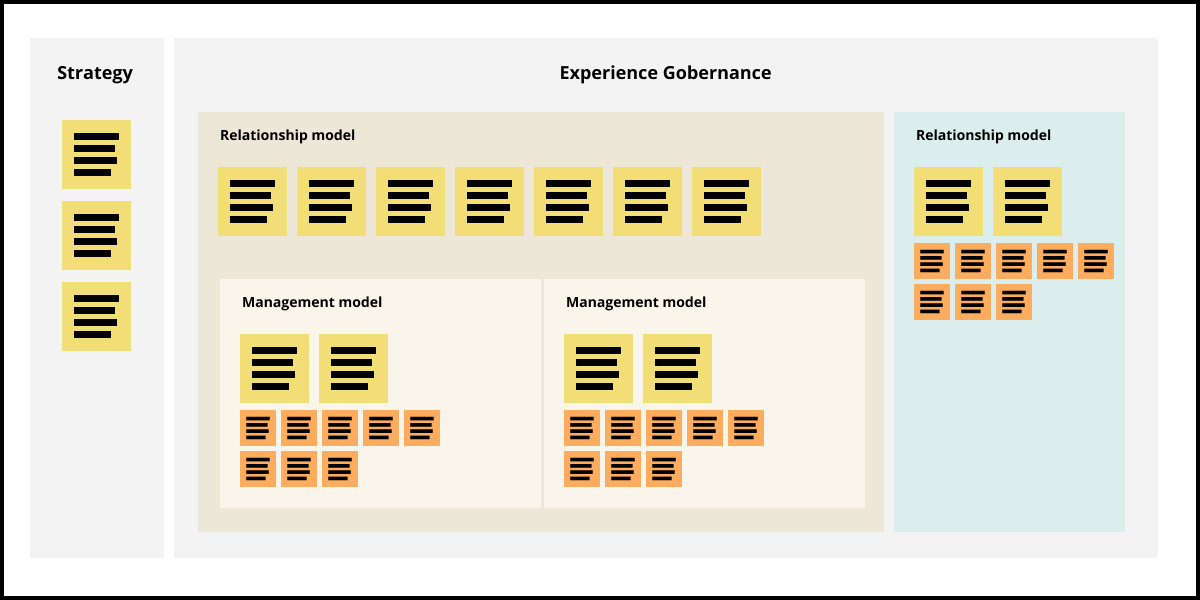

Sorting the work
In parallel to the analysis of the relationship, we deepen in understanding what the day-to-day life of customer service teams is like. Through direct observation, tool analysis, interviews and surveys, we are able to model time usage along with the frictions of task execution.
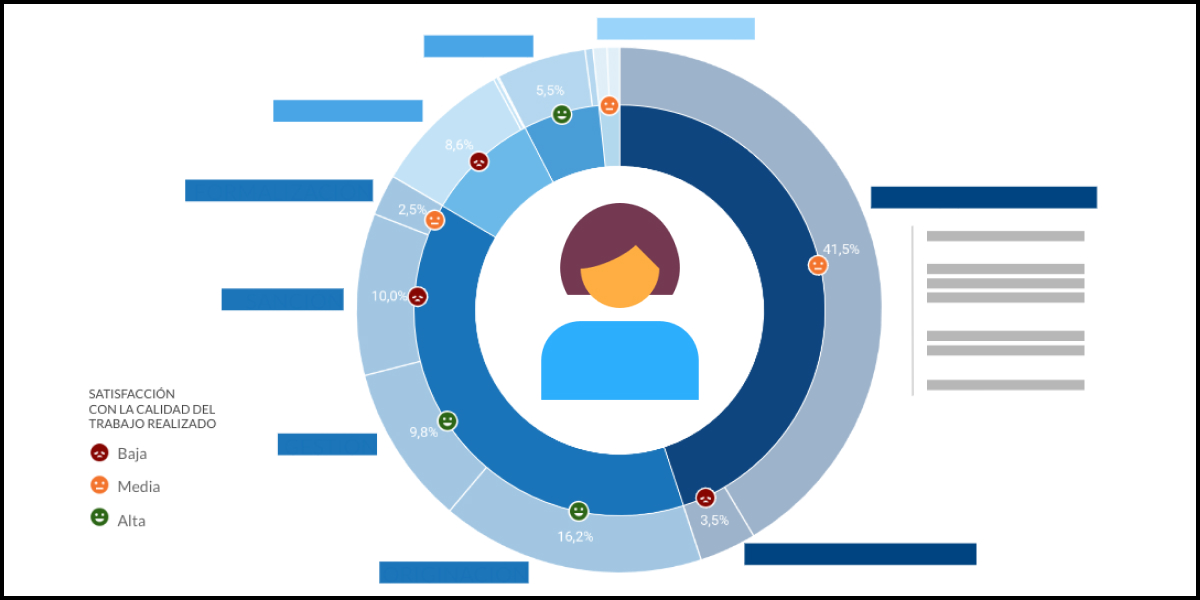
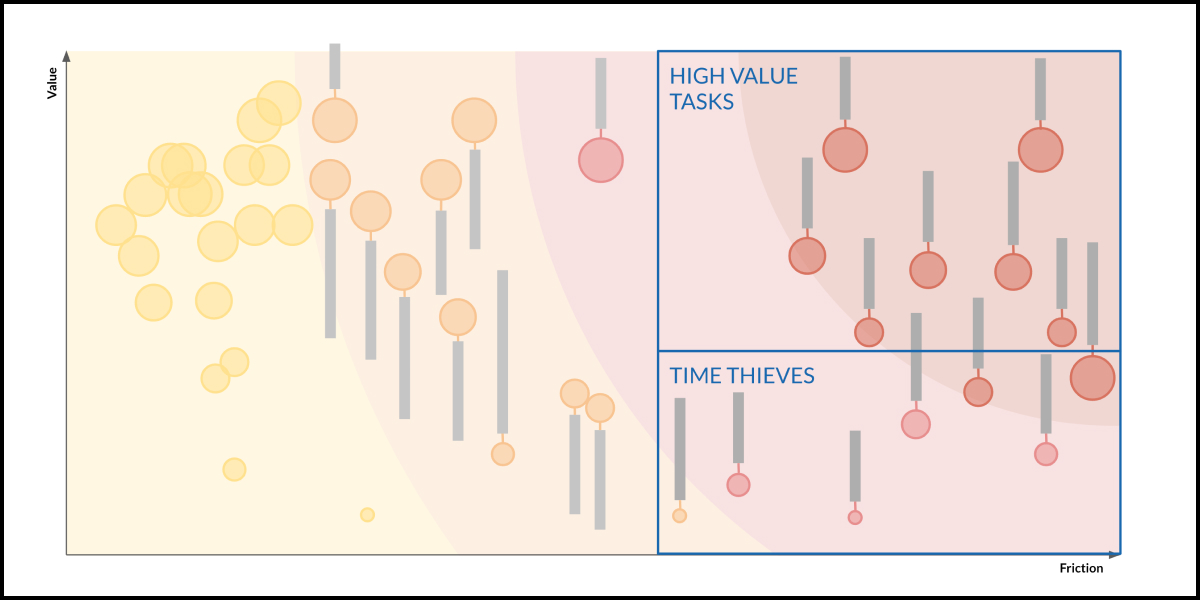
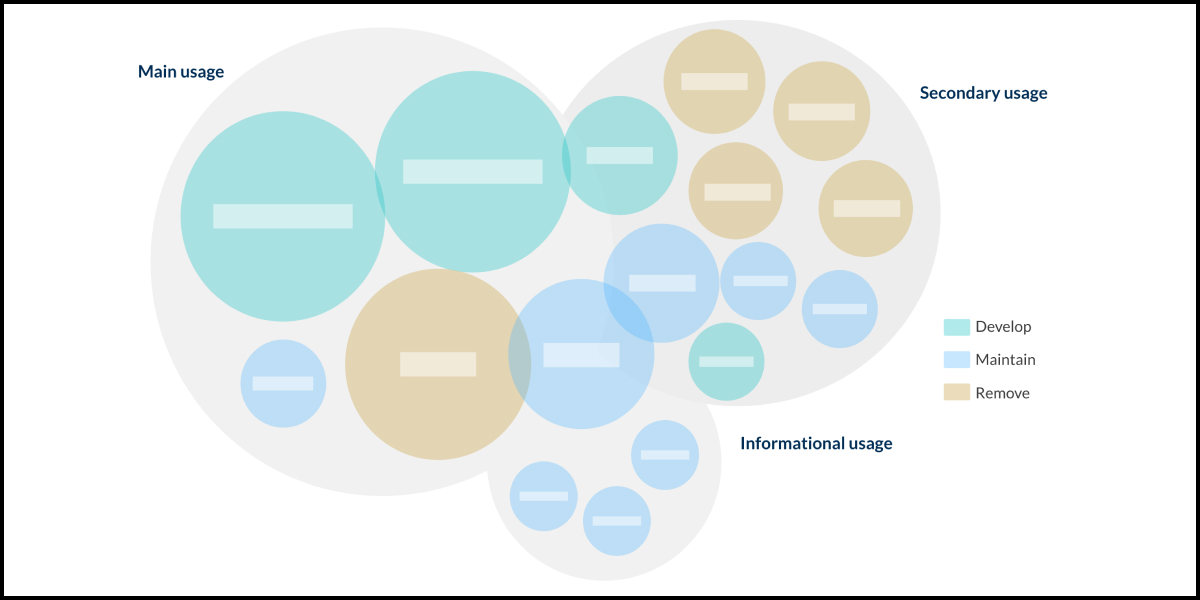
Identifying opportunities and barriers
By analyzing the set of team behavior, work models and tools that aim to articulate this whole set of factors, we defined a series of barriers that hinder productivity and conditioned the success of the rest of the initiatives.
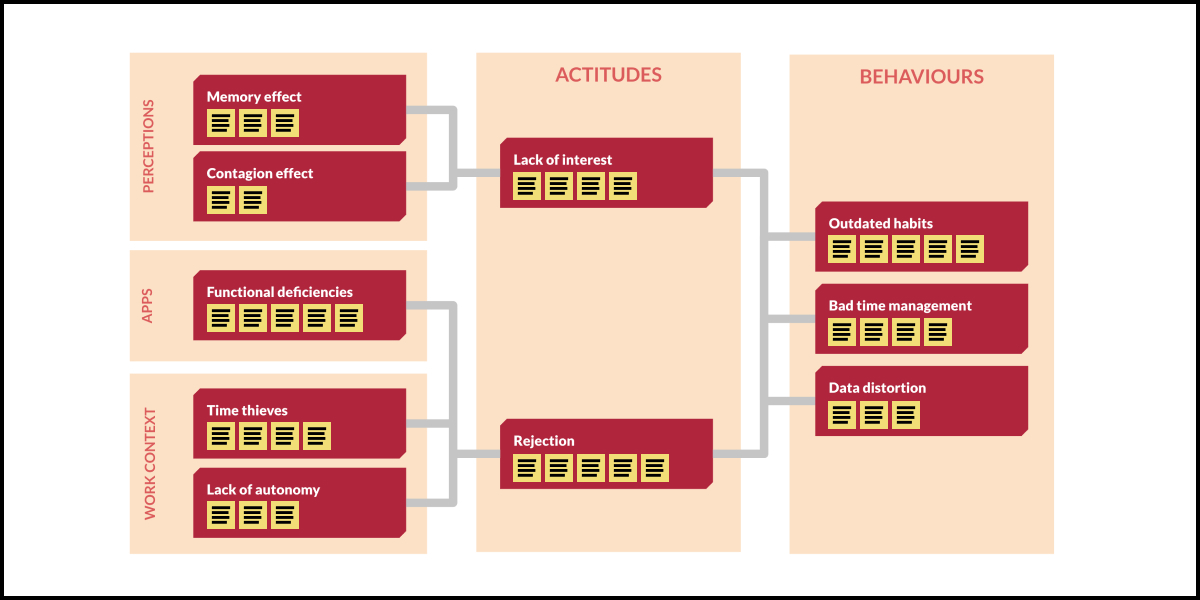
The breakdown of the variables that make up these barriers helps us to define a guide to good practices. Something we observe is that, on a recurring basis, the definition of product design processes is addressed separately. Among the circumstances that are usually excluded are: the dependencies between tasks and people, the recurrence of tasks and the ability to feedback between tasks.
- Dependencies between tasks and people.
- Recurrence of tasks, including your ability to anticipate.
- Ability to feedback between tasks.
As part of this good practice guide, I decided to synthesize the learnings in a working framework for the design of productivity boost, which has been applied in real products, achieving significant improvements and allowing us to iterate and refine the framework.
If you want to know more details about this project, do not hesitate to get in touch.
Contact
